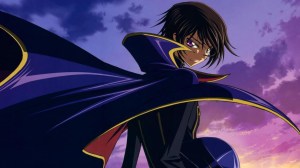The creative team behind Teenage Mutant Ninja Turtles: The Last Ronin reunite to try to keep the runaway success of the so-called “Roninverse” going in Teenage Mutant Ninja Turtles: The Last Ronin II – Re-Evolution. All of the creators behind the original hit are back: Tom Waltz and Teenage Mutant Ninja Turtles co-creator Kevin Eastman provide the story, with brothers Esau and Isaac Escorza drawing the main story, Ben Bishop the flashback interludes, and colorist Luis Antonio Delgado tying the visuals together.
Videos by ComicBook.com
The Ninja Turtles’ other creator, Peter Laird, is notably absent from the credits. IDW billed the first Last Ronin story as a reunion of sorts, the first addition to the “Eastman and Laird’s Teenage Mutant Ninja Turtles” canon in decades, built on a premise the creators conceived of together during the early days of the new TMNT concept. While there’s always pressure on a sequel to be a hit, it may be even greater on The Last Ronin II. With the novelty of Eastman and Laird’s “reunion” gone, can the creators find the same spark as they attempt new tales building on what The Last Ronin established? Re-Evolution #1 suggests yes, even if a bit of that magic may have gone.
The Last Ronin concluded with the comic book equivalent of a post-credits scene revealing that April O’Neil and her daughter, Casey Marie Jones, were raising a new generation of mutant turtles. Re-Evolution begins 15 years later, meaning those young turtles—Moja, Odyn, Uno, and Yi—have grown into teenagers. Since they’ve been training in the way of the ninja all that time, they’re now true heirs to the Teenage Mutant Ninja Turtles moniker. Meanwhile, April and Casey are still leading the Resistance organization in an attempt to restore order to New York City as rival gangs vie to fill the power vacuum left behind when Michelangelo killed Oroku Hiroto. With the Resistance desperately understaffed, Casey has no choice but to finally allow the young turtles their first taste of combat, with some surprising results.
Each turtle’s persona is well-established early on in the issue. Uno and Moja’s personalities clash similarly to Leonardo and Raphael’s, where Uno is the would-be leader of the group with a bit of chip on his shoulder. Moja acts as Uno’s all-attitude foil. Odyn’s gentle personality belies his size, and Yi keeps the peace between her brothers and Clan Hamato’s family traditions. The well-built, familiar-but-not-too-familiar characterizations make it easy to attach to this next generation of Ninja Turtles.
Re-Evolution #1 follows the structure of the original Last Ronin series. Most of it occurs in the universe’s present, as drawn by the Escorza brothers. Bishop draws the interlude, in which the young Turtles recount their family’s story, dating back to the original rivalry between Hamato Yoshi and Oroku Nagi in Japan. Bishop and Delgado beautifully realize the sequence, affecting it like a loosely scrawled-in diary to match the source, Splinter’s journal. Functionally, it acts like a recap to refresh the readers’ memories about the Hamato-Oroku clan rivalry that has been the backbone of many TMNT stories, especially the first The Last Ronin, though whether that’s relevant to the current narrative beyond serving as backstory remains uncertain. Regardless, it casts Re-Evolution and its characters as a natural extension of Eastman and Laird’s original Teenage Mutant Ninja Turtles legacy.
The core portion of Re-Evolution #1 is densely drawn and paced. Most pages are laid out as two-page spreads. In tandem with the dark coloring, the visuals give the story a cinematic feel, evoking the feeling of sitting in a theater in front of a screen. The spreads pack many panels and plenty of dialog within them but never verge into the rote fare that can make a reader’s eyes glaze over. Instead, it effectively conveys NYC’s precarious current state and the stakes of the Resistance’s fight.
Any TMNT story will have some action, and Re-Evolution is no exception. Early on, the Escorza brothers excel at depicting Casey and her enhanced physicality as a fearsome and sturdy foe. There’s also a great use of pace-change when the turtles enter the fray. The many-paneled pages give way to a pair of single-page splashes, conveying the sense of flow as the turtles’ training finally kicks in and their actions approach the automatic, all distraction falling away. Yet, this is undercut somewhat by the turtles’ martial arts styles feeling posed, lacking fluidity of motion or the weight that defined Casey’s scenes.
Re-Evolution is solid, and perhaps it’s unfair to compare it to The Last Ronin, but without Mikey’s death wish fueling the story, or the initial mystery of the Last Ronin’s identity and the fate of his brothers to unravel, Re-Evolution loses some of the grittiness and gravity of its predecessor. There’s the sense that Last Ronin was a grand finale to all things TMNT that had begun with Eastman and Laird, which is missing from Re-Evolution, despite its interlude’s attempts to tie it firmly into that lineage. Though set in the same universe as The Last Ronin, Re-Evolution is essentially a pilot for something new, which isn’t a bad thing but a noteworthy evolution from what came before.
Perhaps what the team is doing here in Re-Evolution is harder, establishing a new cast of characters with their own stories to explore. To that end, the creators have successfully introduced characters worth following and set up stakes worth fighting for. The totality of their vision hasn’t yet become clear—no obvious central villain emerges in this issue, and it is clear there’s more to these turtles than skill with weapons—but Re-Evolution #1 will likely leave readers ready to discover what’s next for Clan Hamato.
Published by IDW Publishing
On March 13, 2024
Written by Tom Waltz and Kevin Eastman
Art by Esau Escorza, Isaac Escorza, and Ben Bishop
Colors by Luis Antonio Delgado
Letters by Shawn Lee
Cover by Esau Escorza, Isaac Escorza, and Luis Antonio Delgado








